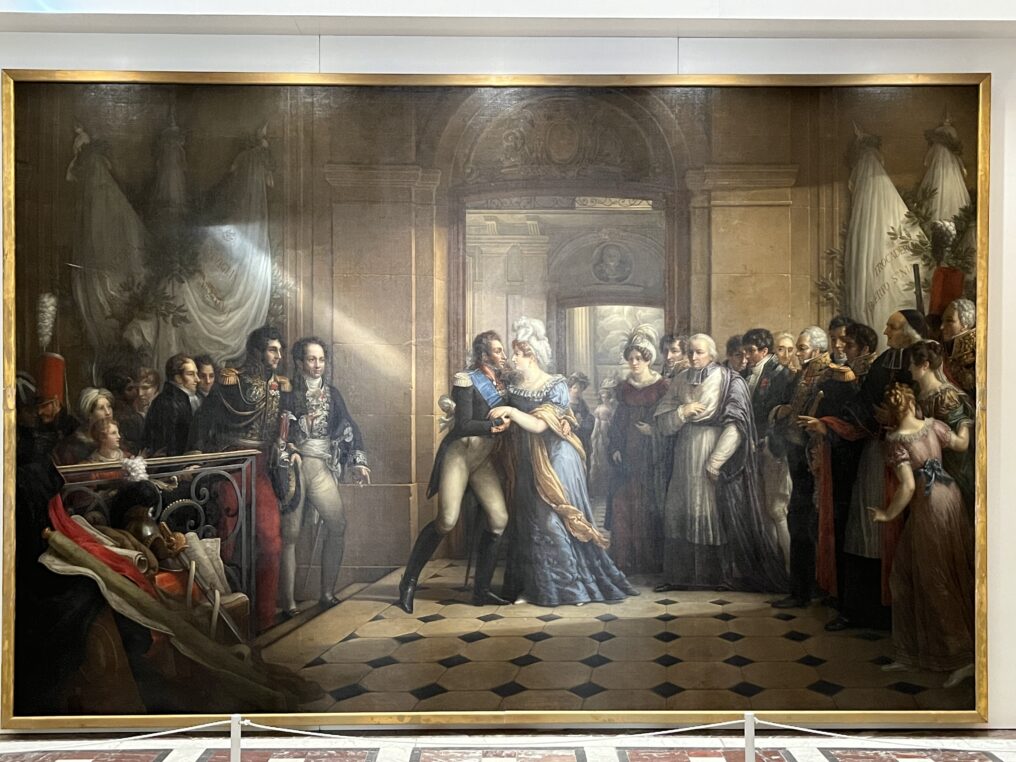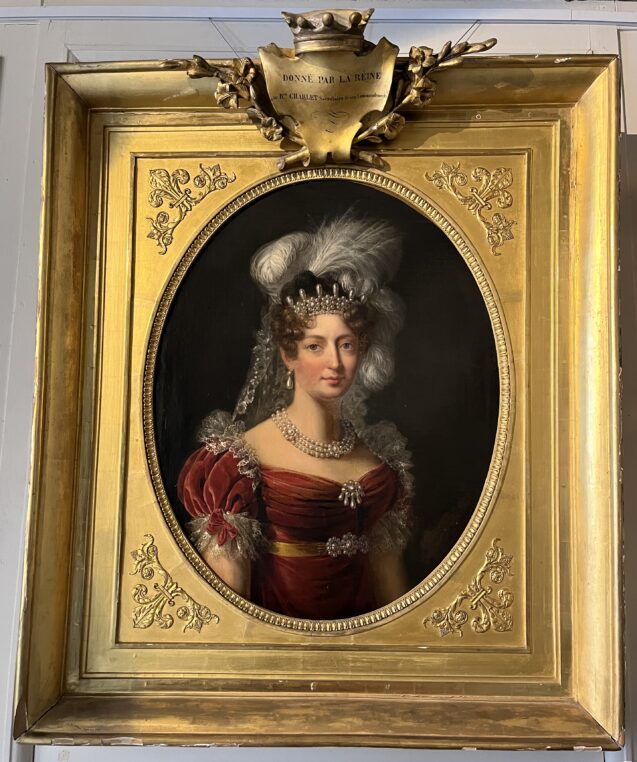
Barthélémy Garnier, “The Duke an the Duchess reunite in Chartres” after the victory at Trocadero, with her lady in waiting Comtesse de Béarn and his aide de camp, Duc de Guiche, 1826, Musée des Beaux Arts de Chartres
La Chapelle Expiatoire is a discreet little chapel built by Louis XVIII in 1815, on the former Madeleine Cemetery, in memory of his brother Louis XVI and Marie Antoinette, who were buried there after their heads were chopped off on place de la Concorde. Their bodies were then transported to the St Denis basilica and the monument finished under Charles X’s reign in 1826. The architect is Pierre Fontaine, who had already made himself famous during the revolution and with Napoléon, working on Palais des Tuileries and Carrousel du Louvre and remained the official architect of the King. The exhibition is devoted to Duchesse d’Angoulême, Louis XVI th ‘s eldest daughter, who was the only member of the family to survive the Revolution and married her first cousin Charles X’s son. Of her Napoléon said, that she was “The only man in the family”, such was her courage throughout the events.

The chapel with the painting by Barthélémy Garnier of Duc and Duchesse d’Angoulême reuniting in Chartres in 1826, Musée des Beaux Arts de Chartres
Their story is both a tragic and a romantic one. They were first cousins and until Marie-Thérèse Charlotte de France was born in 1778, and her younger brother in 1781, Louis Antoine de France (b.1775) was the only heir to the French throne. He was the son of Comte d’Artois, the king’s brother and Marie Thérèse de Savoie. In July 1789, he fled with his parents to the court of Turin where his future aide de camp, Antoine de Guiche would soon join him. After Napoléon’s exile, his father became king in 1824, and he the dauphin. He will very briefly become king Louis XIX in 1830 before being deposed by Louis Philippe.
Their life will go on being a permanent exile after the Duchess survived prison for three years at the Conciergerie and was exchanged at 17, with French prisoners in Austria, where she stayed with her uncle Emperor Franz II. She will be away from France for another 18 years. She is called Madame Royale. She finally joins her uncle in Mittau, now called Jelgava then in Russia and is married to her cousin. A mini court is recreated there by Louis XVIII th until they are able to return to France. Napoléon invades russia and they have to flee to Warsaw and then England in 1811. The only military success that the Duke will have is in Spain in 1823, at the battle of Trocadero when he helps Ferdinand VII to be restored on the throne. The large painting exhibited in the chapel is the commemoration of their reunion after this event.
There are many objects, small portraits, caricatures, plates and documents commemorating this historical couple who were fond of each other even though they were cousins and married for political reasons. Most of the collection comes from Raymond Jeanvrot who gave all his souvenirs of the last Bourbons to the MADD in Bordeaux. The exhibition is very small and is really an excuse to visit they unique chapel on Boulevard Haussmann near Saint Augustin. The garden is a delight and a very good little libretto explains the whole story.
Until September 17, Chapelle Expiatoire
Share this Post


3 Comments on “La Chapelle Expiatoire celebrates Louis XVI th’s surviving daughter”
Une bien fascinante semaine – merci
Fabienne
Une chapelle boulevard Haussmann et moi qui croyais connaître Paris…
toujours aussi intéressant , merci , j’espère à bientôt , Laure